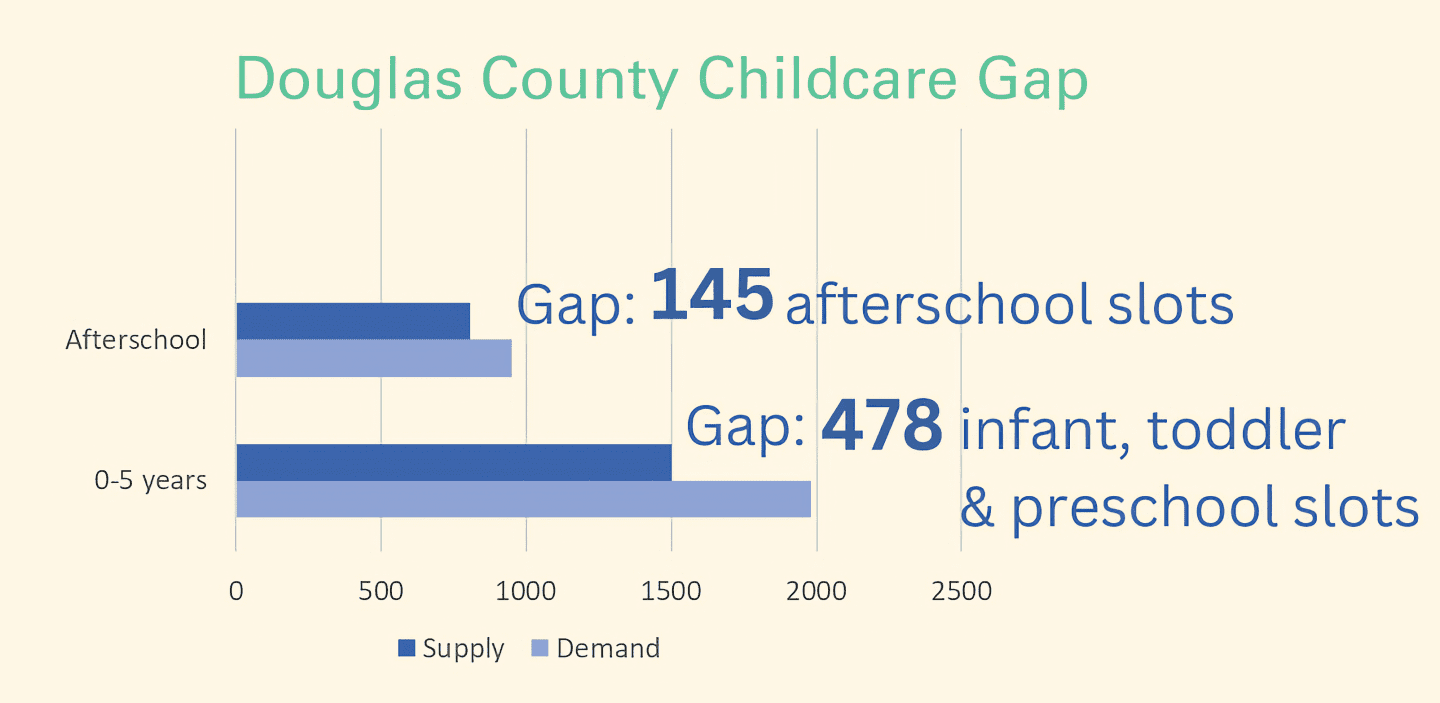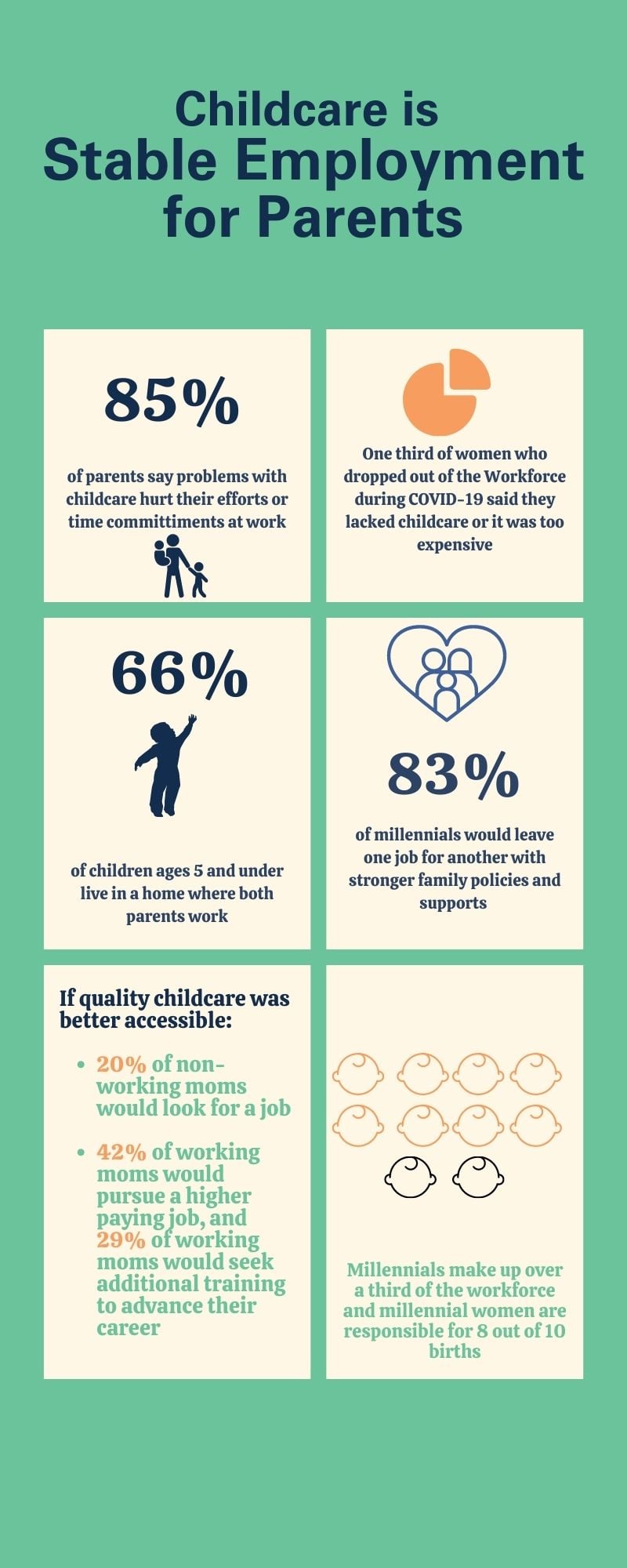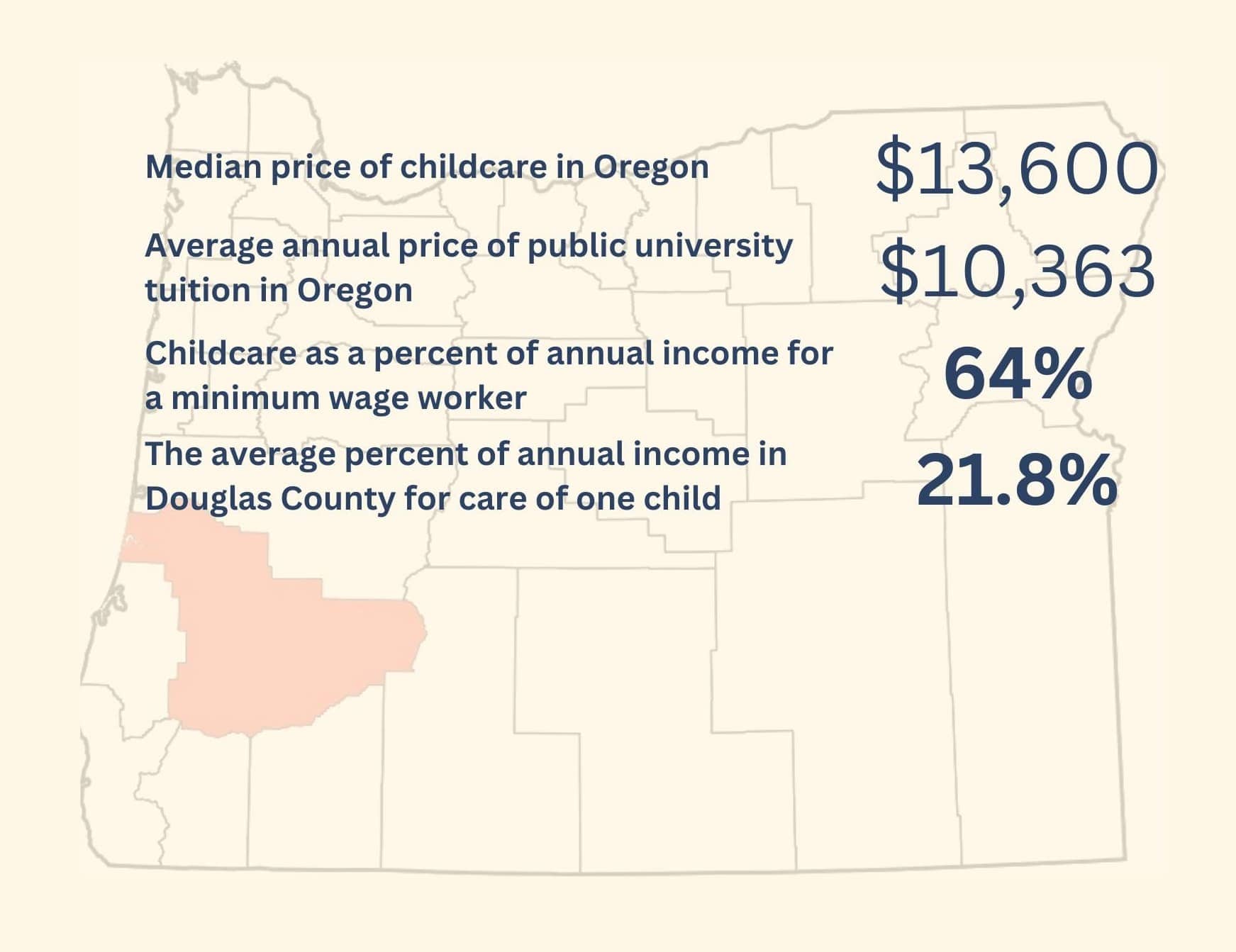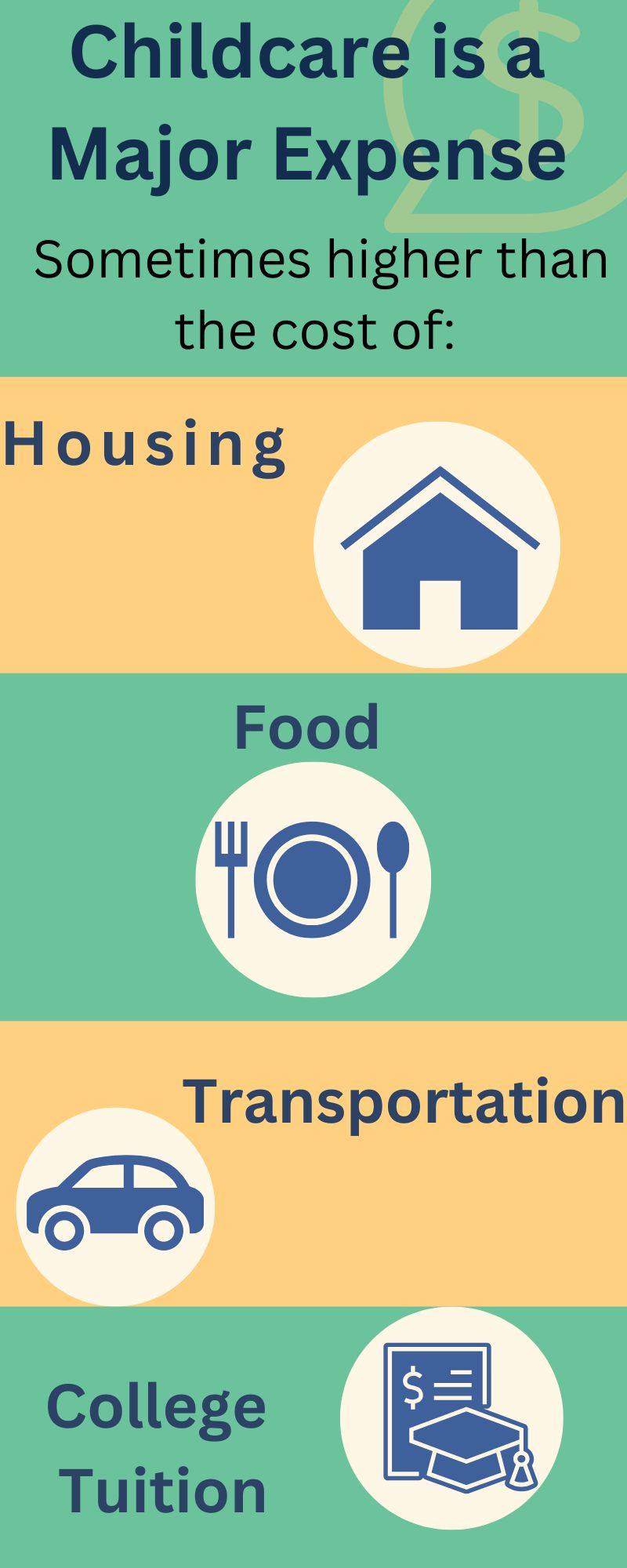Why Childcare is Important to Me





Childcare is an Opportunity and a Challenge

Childcare is more than babysitting
The importance of the first five years of a child’s life cannot be overstated. Infants and toddlers form more than one million new neural connections every second. Preschool age children thrive when they learn critical skills for school readiness and future success.
Studies show the benefits of quality childcare to children, their families, and our community. For example, children who receive two or more years of quality early education benefit in many ways. They tend to be healthier, perform better in school, are less likely to commit a crime, are more likely to pursue higher education, and more likely to be self-sufficient, earning more over their lifetime.
What is quality childcare?
A warm, safe, and supporting environment that includes language and conversations, and opportunities for play with others and hands on exploration. This is supported with planned activities led by trained and dedicated childcare and early learning professionals.
Support quality childcare
Douglas County is a Childcare Desert
All 36 Oregon counties are “childcare deserts” for infant and toddler care, meaning we do not have enough supply to meet demand. Douglas County is also one of 25 counties in Oregon identified as a “childcare desert” for preschool aged care. A childcare desert is defined as having at least three or more children that need care for every one slot available.
An analysis by the Douglas County childcare coalition shows that coming out of the pandemic, the county lacks nearly 500 Infant/Toddler/Preschool slots and 145 after-school slots.

Help fill the gap
Childcare is stable employment for parents
Working parents make great employees as they are generally loyal and productive, with good time management skills. Sometimes childcare issues are the reason for workplace absenteeism or tardiness by parents and caregivers. Reliable and quality childcare is a key element in keeping parents in the workforce. For families that struggle to make ends meet, childcare plays an even more crucial role for workers to maintain steady employment and increase their earnings over time.
Employment by women has gone down in recent years, a trend before the pandemic but accelerated during it. This is significant as women make up nearly half of the American workforce, and mothers are 40% of primary breadwinners. Thriving at work for many women starts with finding stable, affordable care for their children.

Help our working parents and employers
Childcare is a strong economy
Parents make up a sizable share of our workforce. Oregon employers and all community members benefit from the services of childcare providers. Employers benefit because childcare helps their workforce remain stable, reliable, and productive. Community members benefit because this helps businesses and organizations stay open and provide the goods and services we want in a timely manner. Accessible childcare is a sign that this is a thriving community and a great place for families to live and raise children.
Many reports indicate that the US, including Oregon, is experiencing a childcare crisis. The overall economic impact of the lack of childcare has doubled since 2018. The continuing lack of access to quality and affordable childcare costs $122 in lost earnings, productivity, and revenue every year in the United States.
- Families lost $78 billion in lost earning and job search expenses
- Employers lose $23 billion in childcare challenges faced by their workforce
- Taxpayers lose $21 billion in lower federal, state, and local tax revenue
Grow our local economy
Childcare is expensive but necessary
In addition to difficulty locating quality care, parents are feeling the stress of increased cost. For many families, the cost of childcare is unaffordable and a significant financial burden, while others are simply priced out. Middle-income families really feel the pinch when they don’t qualify for subsidies. The expense and lack of availability of childcare can lead to negative impacts on families, children, and our economy.
- According to the Economic Policy Institute, parents in Oregon pay an average of just over $13,600 per year in childcare costs for infants, while the average annual tuition at a four-year public college is $10,363. The median price center-based care in 2022 was $17,000.
- A family earning the median household income would spend 18% of it on childcare. For an individual earning minimum wage, care costs about two thirds (64%) of their earnings.
- More than half of U.S. families spent more than $10,000 on childcare in 2020.


It’s important that everyone in the community considers ways to increase the accessibility of childcare, such as advocating for policies that support affordable and high-quality care. Find out how you can support and take action to ensure that Douglas County families have access to the care they need to thrive.
